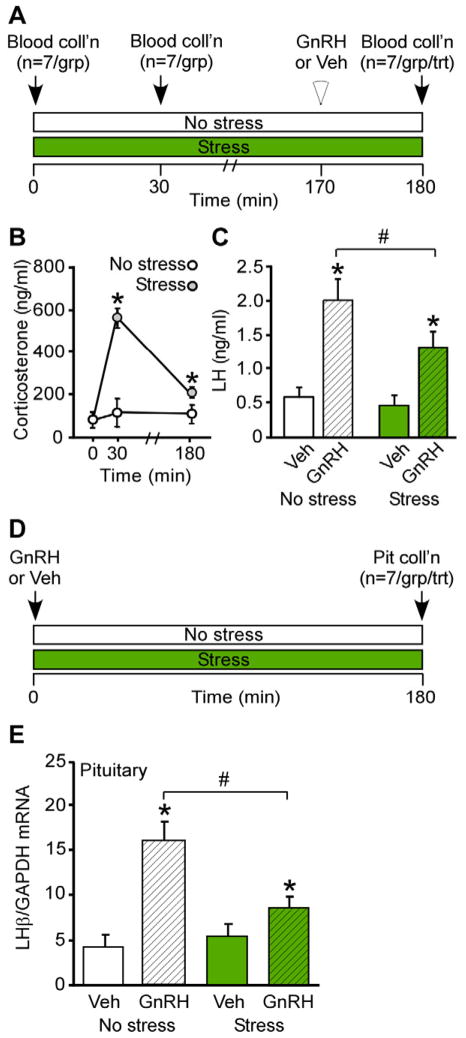FIG. 1.
Acute restraint stress disrupts pituitary responsiveness to GnRH in female mice. A, Schematic depicting events during the 180 min observation period in which animals were maintained in no stress conditions or subjected to restraint stress for measurement of circulating corticosterone and GnRH-induced LH. Time of sacrifice and blood collection are indicated: 0, 30 and 180 min. At 170 min, no stress and stressed animals (group) are divided into two treatments (n=7/group/treatment) receiving either GnRH (200 ng/kg, s.c.) or vehicle. B, Serum corticosterone (ng/ml) was measured in no stress and stress animals. *, indicates significant (p<0.05) effect of stress. C, Serum LH (ng/ml) was measured in no stress and stressed animals that received vehicle or GnRH, respectively, 10 min prior to sacrifice. *, indicates significant (p<0.05) effect of GnRH; #, denotes difference between no stress and stress. D, Schematic depicting events during 180 min observation period in which animals are maintained in no stress conditions or subjected to restraint stress for measurement of GnRH-induced LHβ mRNA. No stress and stressed animals are divided into two groups (n=7/group) receiving either GnRH (200 ng/kg, s.c.) or vehicle at 0 min of observation. Time of sacrifice and blood collection occurred at 180 min. E, Quantitative RT-PCR analysis of LHβ mRNA was performed on individual mouse pituitary glands and the amount of LHβ mRNA compared with the amount of GAPDH mRNA and expressed as relative transcript level. *, indicates significant (p<0.05) effect of GnRH; #, denotes difference between no stress and stress. Reprinted with permission from The Endocrine Society (Breen et al., 2012).

